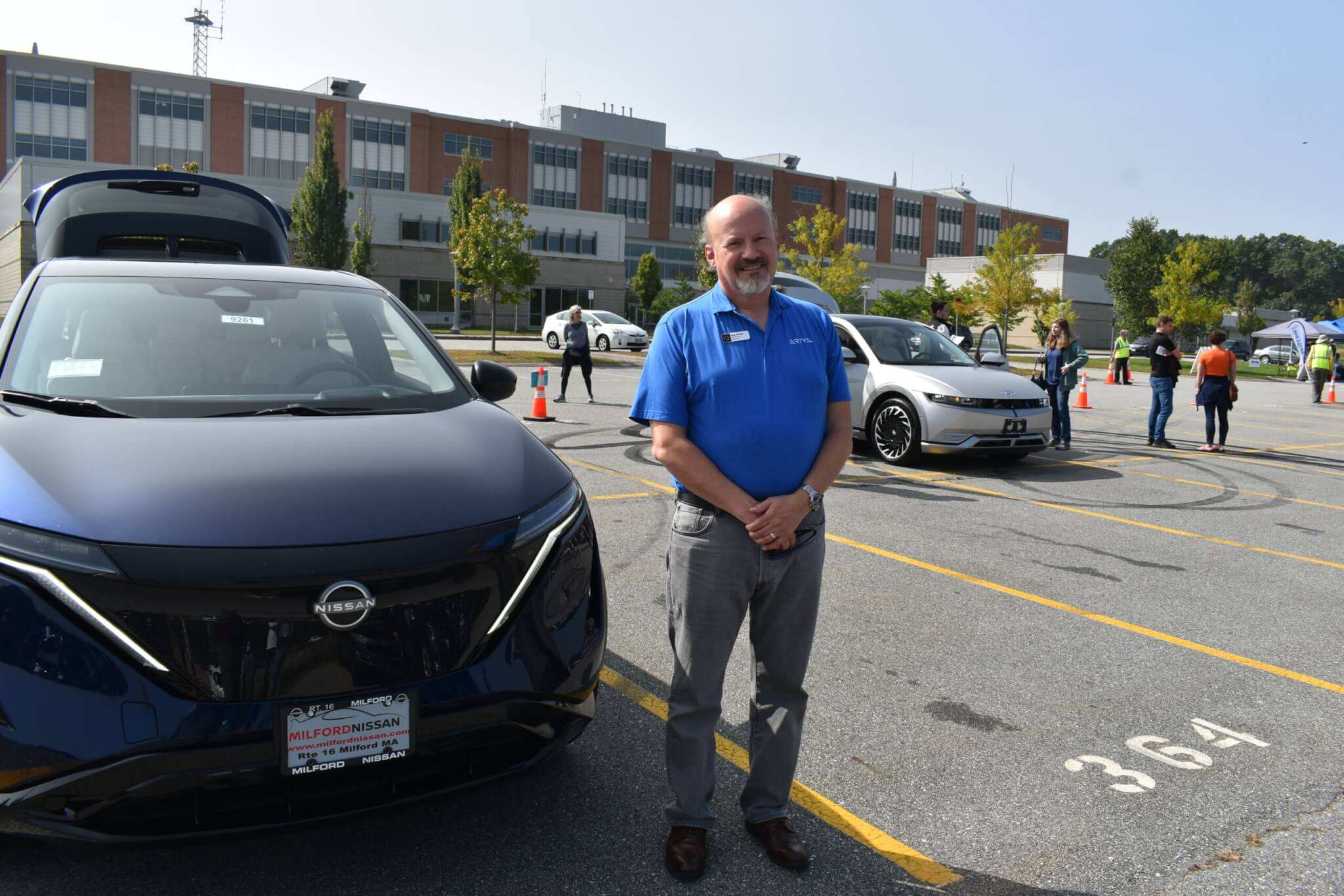If visitors found one thing missing from the Concord Ride & Drive event, it was the roar of exhaust.
Instead of the throaty growls of big gas or diesel engines, the electric motors hummed below the hearing threshold inside the fleet of EVs available for a test drive on Sunday thanks to the Concord Municipal Light Plant.
More than 100 people flocked to Concord-Carlisle High School to drive shiny new cars and SUVs and to talk to current EV owners and experts.
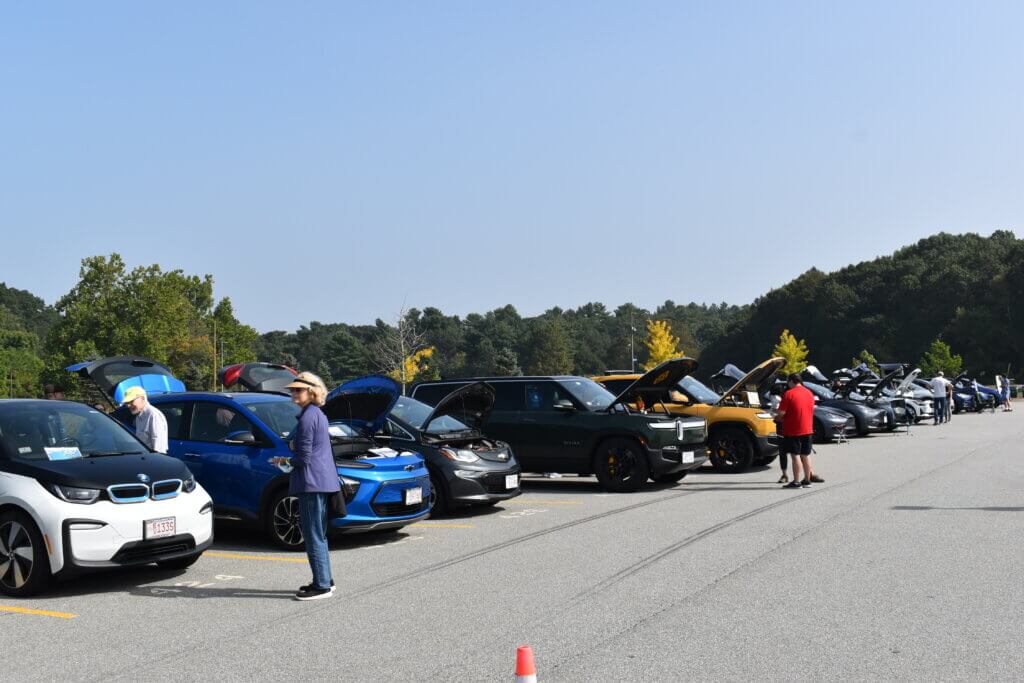
Missing from these EVs grills to cool a big engine and pipes for an exhaust system, giving the vehicles a more streamlined appearance than their standard brethren.
With no transmission or shifting, and a balanced ride from the low-riding battery, the vehicles accelerate smoothly and rapidly, said Concord-Carlisle alumnus Guy Bedau, the Northeast region EV specialist for Nissan.
The Nissan ARYIA, a crossover, drove just as he promised and very quietly, too.
Using an app like PlugShare helps drivers find public charging stations while on the road, but most folks charge at home, Bedau said.
Current owners sang the praises of their vehicles.
“It’s the best thing I’ve ever bought in my life,” Glenn Corwin of Framingham said of his 2017 Tesla X, a crossover with rear falcon-wing doors. Charging costs him nothing, because he always charges at home and produces plenty of power from his solar system.
Oil changes are a thing of the past also because of the small electric motors. Wipers, tires and washer fluid are about the only expendables, he said.
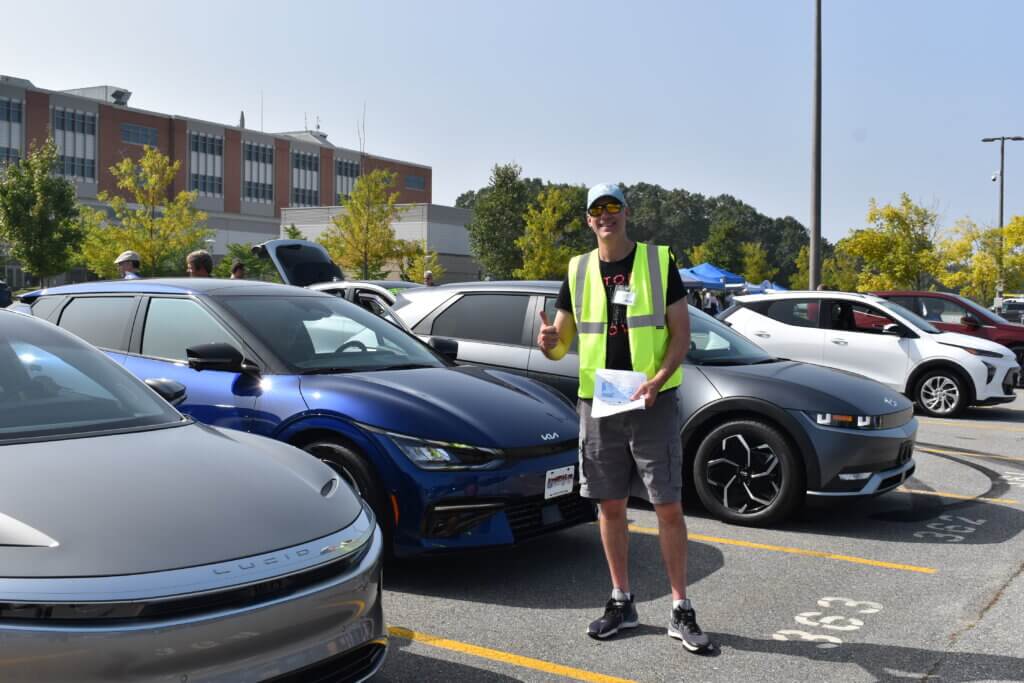
Current rebates and no maintenance costs to speak of mean EVs are more affordable than most think, said Jeff Manning of Energy New England, an organizer of the CMLP-sponsored event.
By offering rebates on vehicle purchases and charger installation, and incentives for overnight charging, CMLP is further sweetening the pot for EV owners while striving to reach a goal of reducing town-wide greenhouse gas emissions by 25 percent from 2008. Concord’s utility already provides all non-carbon emitting electricity, seven years ahead of its goal, according to material provided by CMLP.
CMLP can provide plenty of electricity to go around. If charging time is managed, Concord could accommodate over 32,000 EVs. Currently, more than 14,000 vehicles including gas-powered, EVs, plug-in electric hybrids and traditional hybrids are registered in town.
New owners might be looking at some expense to charge at home.
All EVs can be charged with the included adaptor and a standard, 120-volt outlet, Level 1 charging, but that will only add about 50 miles overnight.
Level 2 charging, which most EV drivers opt for, requires a 240-volt circuit. The car must be equipped for this. The average cost to install a Level 2 charger at home averages around $1,200 but can be as small as a few hundred dollars or up to $3,000.
CMPL recommends checking with an electrician.
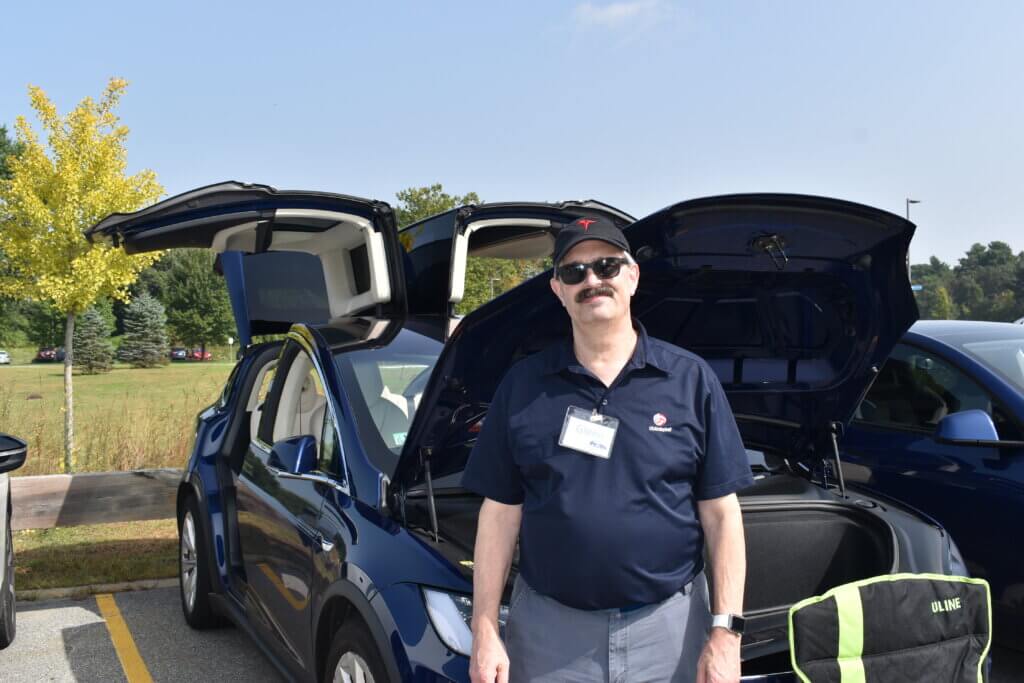
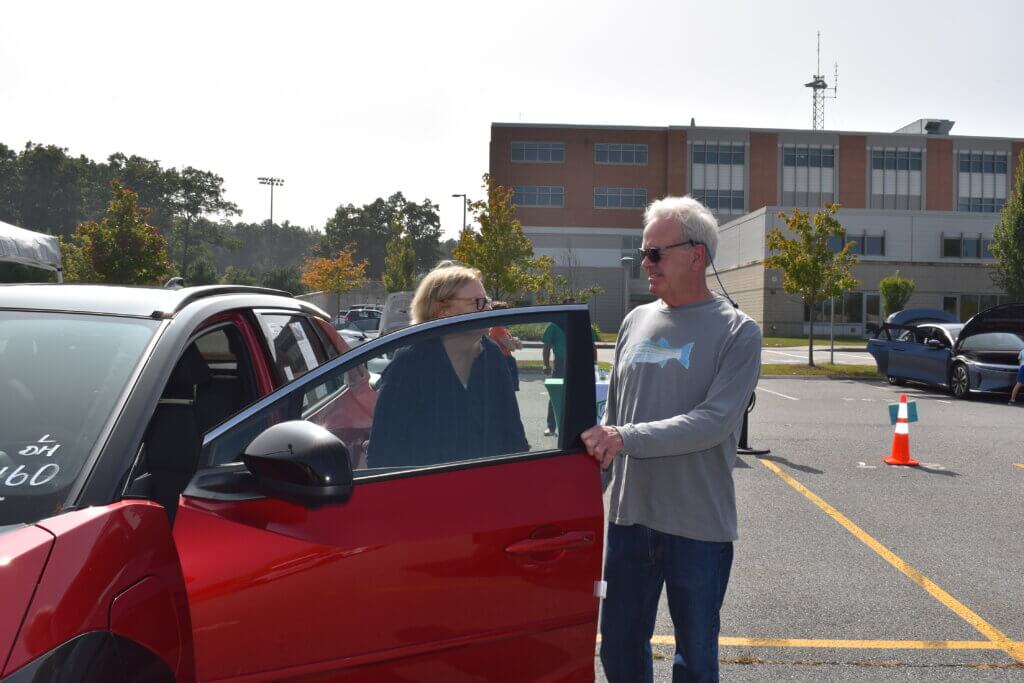
In addition to the rebates and cost incentives offered by CMLP, both federal and state incentives can drive the cost of a new or used EV down to the price of a comparable gasoline vehicle.
EVs pay off environmentally and financially in the long run, CMLP wrote.
While the initial global warming cost of building an EV is higher than a gas-powered vehicle, the payoff comes from using fossil-free fuel. Using a typical electric power supply, an EV generates only 52% to 57% of the emissions over its lifetime as a similar vehicle.
With a zero-carbon electric supply, like CMLP, lifetime emissions are cut to 10% to 20% of a gasoline-powered vehicle.
What happens to the battery when it reaches end of life?
Recycling is a work in progress. Vehicle manufacturers are working with recyclers to recover the metals and put them back into the supply chain, said Eric Desrosiers, Energy New England Program Support Specialist, EV Charging.
The batteries could also be reused. Around 70% of the capacity remains after the battery can no longer power a vehicle. They can be used for storage for intermittent energy generation such as solar and wind and at EV charging sites to use during peak demand.
For more information, visit ConcordDrivesElectric.org.


